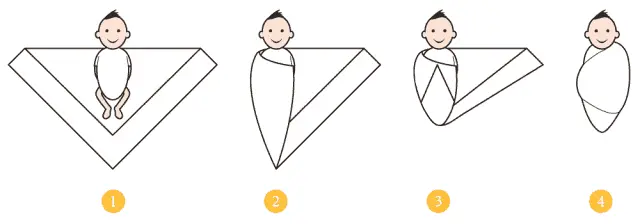I’m a pillow kind of person. If I could, I’d build a nest of feather pillows, nestle in and sleep forever. Sadly, my husband likes a firm mattress, so no such luck. Being a pillow person though, when I had my first baby I was sure I needed to shop for some baby pillows. Beds need pillows after all. However, I’d heard mixed information about babies and the use of pillows. I wasn’t really sure if he should have one, whether I feel everyone requires a good soft pillow or not.
So, are baby pillows safe for infants?
Pillows and other soft bedding are not recommended for infants. The concern is your baby may roll over, plant their face into the pillow and suffocate when he/she can’t roll back over, or may pull the soft bedding over their face. A firm sleeping surface has been shown to reduce the risk of SIDS as well. Some parents still use specialty baby pillows, but non-essential bedding isn’t recommended by pediatricians, no matter how firm they are. In fact, some even suggest you dress baby in warm sleepers or swaddle, rather than even using loose blankets. While I understand that to an adult pillows seem like a “need,” they really are just a luxury and are not necessary.
When can I use baby pillows for my baby?
In general, baby pillows aren’t recommended for children under 2. However, as a mother, I find this suggestion a little hyper-vigilant. My children were more than able to roll over or pull a pillow from their face at even age 1. They also had the mental capacity to feel something was wrong, wake up, and do something about it. You know what your child is capable of, so really it’s your call. I began using baby pillows when my boys were around 6 months old.
I would, however, avoid some modern, fancy pillows you see available for kids that have elaborate quilted characters, pouches, etc., as I could see a younger baby becoming tangled in such items. These are super cool for toddlers, but not necessary for babies. When you do decide to begin using baby pillows in your baby’s crib, choose a firmer pillow with a zip-on tight case, or no case at all. Cotton is recommended material wise, as some others, such as satin, can be harder to breathe through or may aggravate skin when in contact with moisture from saliva or sweat. You’ll want to wash your baby’s pillow often with a no-fragrance, chemical-free soap designed for sensitive skin–that milk drool can get pretty stinky.



